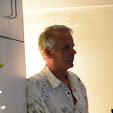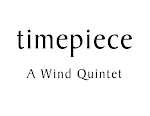On Friday we had the inaugural performance of the Kenwood Players over at the Gordon House, an assisted living facility. Bill and Crawford on Eb tubas, Maggie and Dick on clarinet and trumpet, Steve on trombone, and me alternating horn and flute. We played Christmas carols in four voice arrangements based on the old Episcopal Hymnal.
The room was small and there were, at most, twenty residents in the audience. One of the things I kept noticing was how the audience seemed deeply affected by the music. It was nothing like leading a sing along, and, of course, Christmas music is especially appealing. But I was reminded of the studies that live music benefits health. With all the timbres we created in that small room, so close to the audience, you could make a case it was as much subtle body work as it was music.
I hadn't worked with a population like that for years, and never with such a fine group of musicians helping me. It made me realize how I've always presented music therapy performances differently than straight up musical performances. I naturally did as much as I could to break down the barrier between performers and audience, and at the end of the session, a nice little social mingle naturally bubbled up.



